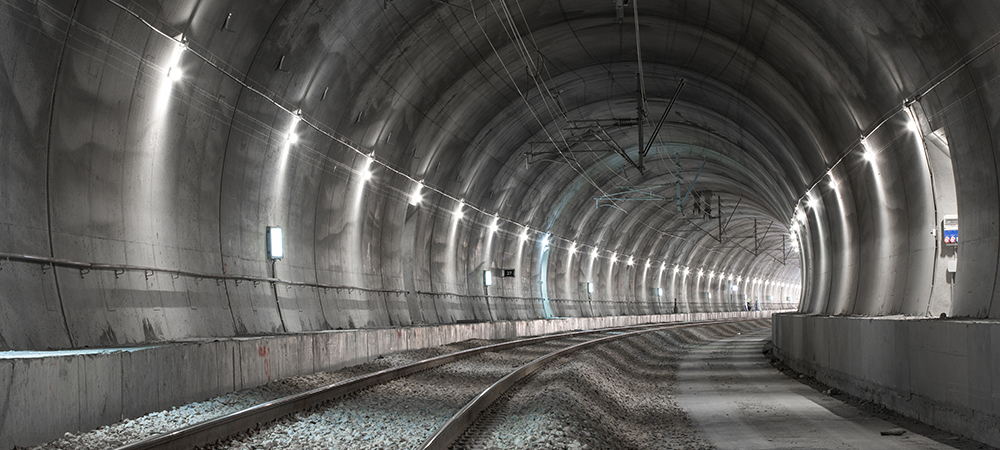As transport starts to electrify, new challenges are constantly emerging. However, solutions are emerging to tackle these problems. hyperTunnel is one of these solutions. Jeremy Hammond, Co-founder of hyperTunnel, speaks about the company’s growth, unique technology and market demand.

hyperTunnel is developing a radical and fundamentally new way of constructing, enlarging, repairing and maintaining tunnels and other underground spaces such as underpasses and car parks. It is doing this by transferring advanced technologies and methodologies from other industries as diverse as materials, aerospace, oil and gas, geoscience, medical devices and Formula 1.
hyperTunnel’s innovations are focused on transforming underground construction by building tunnels more quickly, with less risk and in a more economical and environmentally friendly way. This is achieved through the application of technologies such as digital twins, robots and swarm technology, 3D-printing and digital underground surveying, supported by Artificial Intelligence and Virtual Reality.
Intelligent SME.tech speaks to Jeremy Hammond, Co-founder of hyperTunnel, about hyperTunnel’s ground-breaking technology, how this impacts the transport industry and the future of the company…
Tell us a bit more about hyperTunnel and the clients and markets served?
hyperTunnel is a revolutionary new approach for tackling the underground construction space – that’s construction, monitoring, repair and enlargement. My business partner, Steve Jordan, sought ways of making tunnelling cheaper when devising a tidal range project. He came up with an idea that quite revolutionised tunnelling, using a very simple method. If you think about tunnelling today, it’s about digging a hole and then building the tunnel with mechanised methodology. But, what hyperTunnel does is build the tunnel and then dig the hole. We 3D-print the tunnel inside the geology before ripping out the guts of the tunnel to create the hole that you seek in the ground. Our technology really revolutionises the way that it’s done and it does it faster, cheaper, more environmentally friendly and very safely because no humans go underground until the tunnel is complete.
How has the business grown since it started and how have you ensured growth?
It was a crazy vision. We had a good backing in terms of the technologies that we were going to employ because what we did was employ the technologies from multiple different industries, and we brought them into the tunnelling industry.
We had very good seed funding support from a highly capable and qualified engineer, successful businessman and leader of a family office. At the same time, we had two very large industrial supports – MBCC, the former construction chemicals division of the German chemicals giant BASF, and Network Rail. Network Rail has a large portfolio of over 650 tunnels so there’s a lot of maintenance to be done. What our technology represents to Network Rail is the ability to solve a number of their challenges, such as maintaining the tunnel and enlarging it where that’s necessary.
You have situations all over the country where they aren’t able to electrify simply because the tunnel isn’t large enough to carry the electrification infrastructure and the train. For example, along the west coast of Wales, they’re still using diesel trains as many tunnels need enlarging and the technology available today to enlarge the tunnels without shutting them is extremely limited. But hyperTunnel represents an opportunity for them.
How is your technology revolutionising the construction industry?
Fundamentally, the concept is we build the tunnel and then dig the hole, not the other way round – that’s pretty revolutionary. However, more revolutionary is our belief that the default for underground structure creation, by the end of this decade, will be the use of swarming robots.
Currently, you tackle the tunnel from one end, meaning you are using anything but swarming – you’re only tacking it on one face, sometimes two. But, even in Victorian times, they used to employ swarming technology – humans – and instead of attacking the tunnel from two ends, they created shafts down the length of the tunnel, dropped down into them and tackled the tunnel in either direction from the shaft. Creating as many faces as possible and managing to get them all to meet up increased the speed at which they could construct. This is the same approach we are taking, with our swarming robots.
You fully understand the potential of hyperTunnel, if you understand that for hyperTunnel the length of the tunnel is not the key determinant of the time taken to construct it. With in-situ tunnel building, you have a tunnel with a series of pipes and in those pipes are swarms of robots building the tunnel shell and constructing it underground. The tunnel is being constructed everywhere, at the same time, in multiple different places – and the construction of the tunnel is not limited by the length, simply by the number of bots you send down the pipes. As a result of this, costs and time decrease dramatically, there’s less impact on the environment and the whole process is much safer, as there’s nobody underground; underground swarm construction in action.
What are some of the key challenges your customers are experiencing?
hyperTunnel’s direct customers are the contractors that are building the tunnels for the end clients, so large contracting firms that are contracted by governments and the mining industry, for example.
For all of them, cost is always a key challenge but speed is also an important factor because it affects cost Safety has become a better managed factor in the construction industry of late, although hyperTunnel is still safer because nobody is put at risk.
Then environmental impact – which has come to the forefront in recent times – is what drove us to integrate renewable energy concepts and solutions and it’s what continues to drive us. Environmental impact, and how it can be minimised, is everything. If you compare the scale of the infrastructure required to build a tunnel today, it is enormous by comparison to what hyperTunnel requires. A bot is a mere two to three metres long, it’s a tiny piece of infrastructure. That is just one example of how the hyperTunnel method will fundamentally unlock opportunities for more sustainable construction.
Can you share any examples of completed/ongoing projects and the benefits realised?
We’ve got to a stage where Network Rail has given us a contract to prove the application of our technologies to deliver new solutions to their challenges, and we have we are about 90% of the way through the deliverables of that. They are extremely pleased with the progress that has been made on our test site.
Our next phase is the testing of the technology in multiple geologies in multiple locations with current and future clients. We have currently been provided with a list of 59 potential test sites around the world, however, we can’t do all of them as we just don’t have the resources and it wouldn’t be a sensible focus. We are in the process now of talking to these major multinationals and we are whittling down the opportunities to a sensible number that they – and we – can best tackle.
We are also establishing a site within the UK as a commercial exercise, which will be our first on-site rather than a test environment – like we undertook for Network Rail. I think the best news is we don’t have the problem of trying to find people that wish to use our technology or sites that wish to test it, we have to whittle it down and keep it manageable.
How important is technology to your own business for ensuring the ability to scale and how do you plan to grow the business further?
The two are interrelated because our technology is scalable which means our business is scalable. It’s also relatively easy because the constituent components of our technology are physically small. So, to package and spread the technology and enable others in different parts of the world to utilise it means the scalability of the organisation is relatively simple. Our inherent technology combined with our route to market is very important to our ability to scale.




